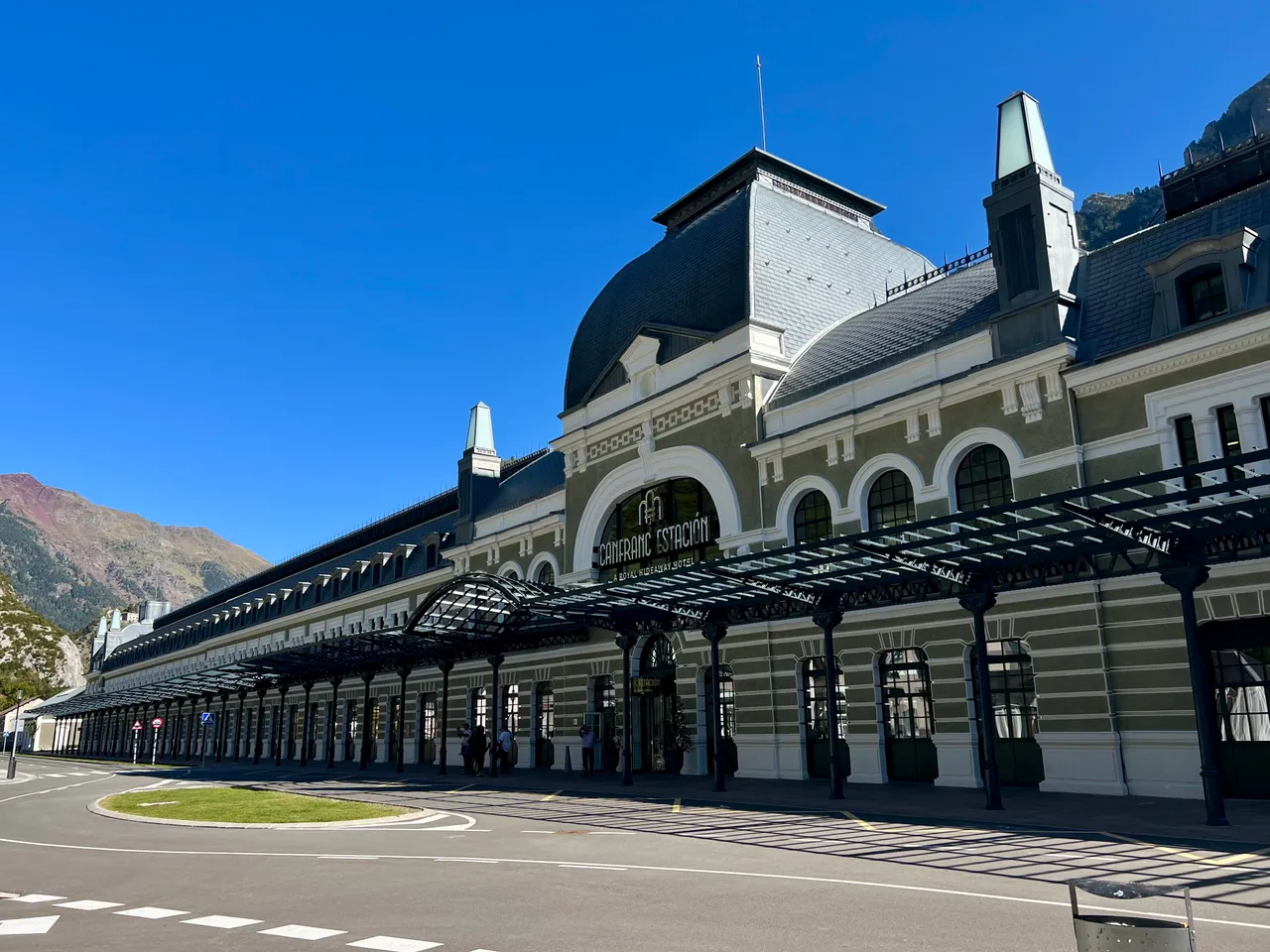

Hola querido hiver.
Existe un lugar a menos de dos horas de mi ciudad en el que naturaleza, historia y arquitectura se combinan para ofrecer un espectáculo de disfrute para la vista y la imaginación.

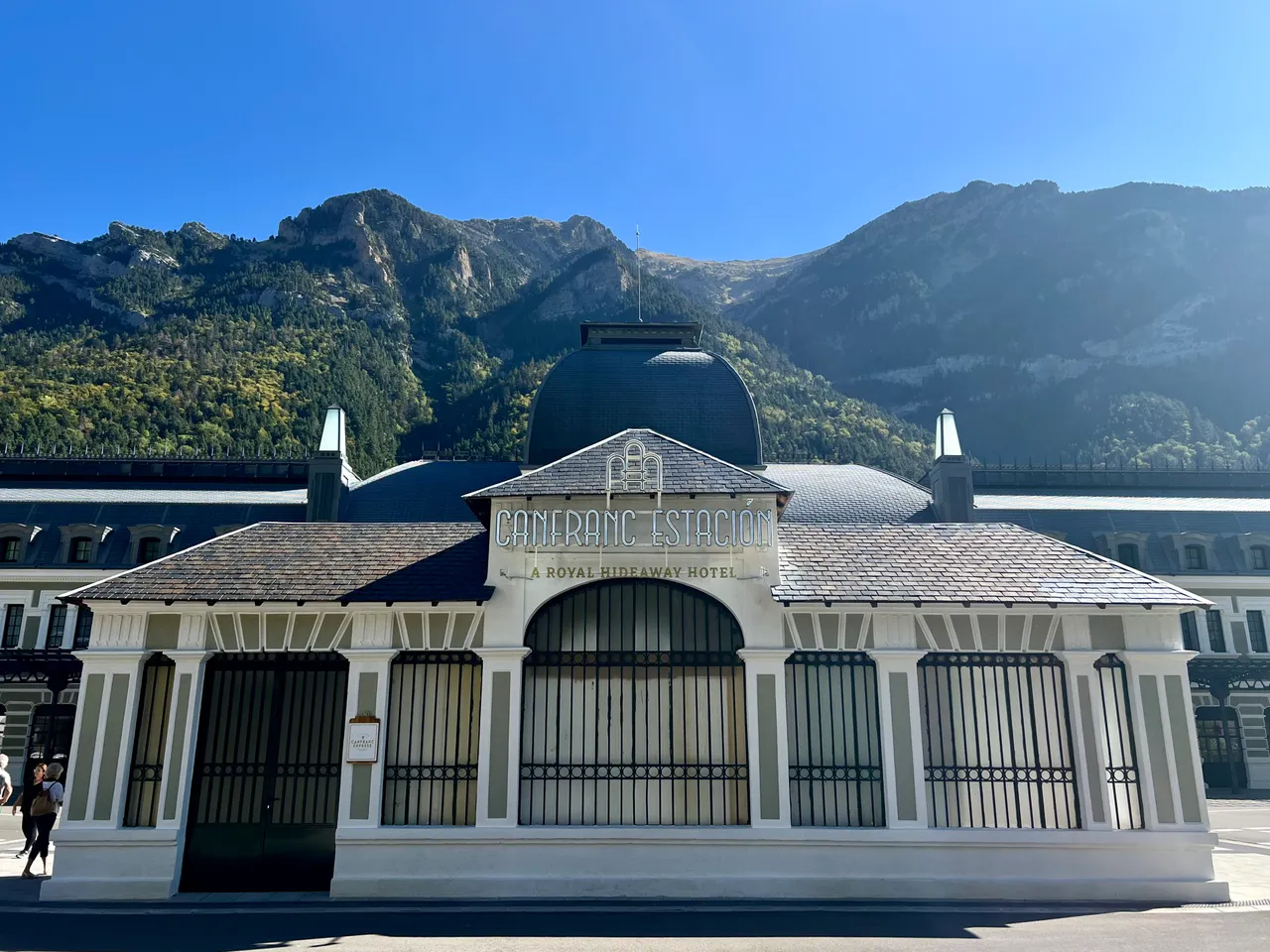
Hablo de la Estación Internacional de Ferrocarril de Canfranc, situada en el corazón de los Pirineos. Este edificio fue durante un par de décadas el principal nudo de conexión entre Francia y España, pasando a través de sus vías personas y mercancías a ambos lados de la frontera.
Inaugurada en 1928 bajo el reinado de Alfonso XIII en España y la Presidencia de M. Gaston Doumergue en Francia, se mantuvo en servicio hasta finales de los años 40, cuando por desavenencias políticas derivadas de la Segunda Guerra Mundial se clausuró y entró en abandono hasta hace muy poco tiempo.

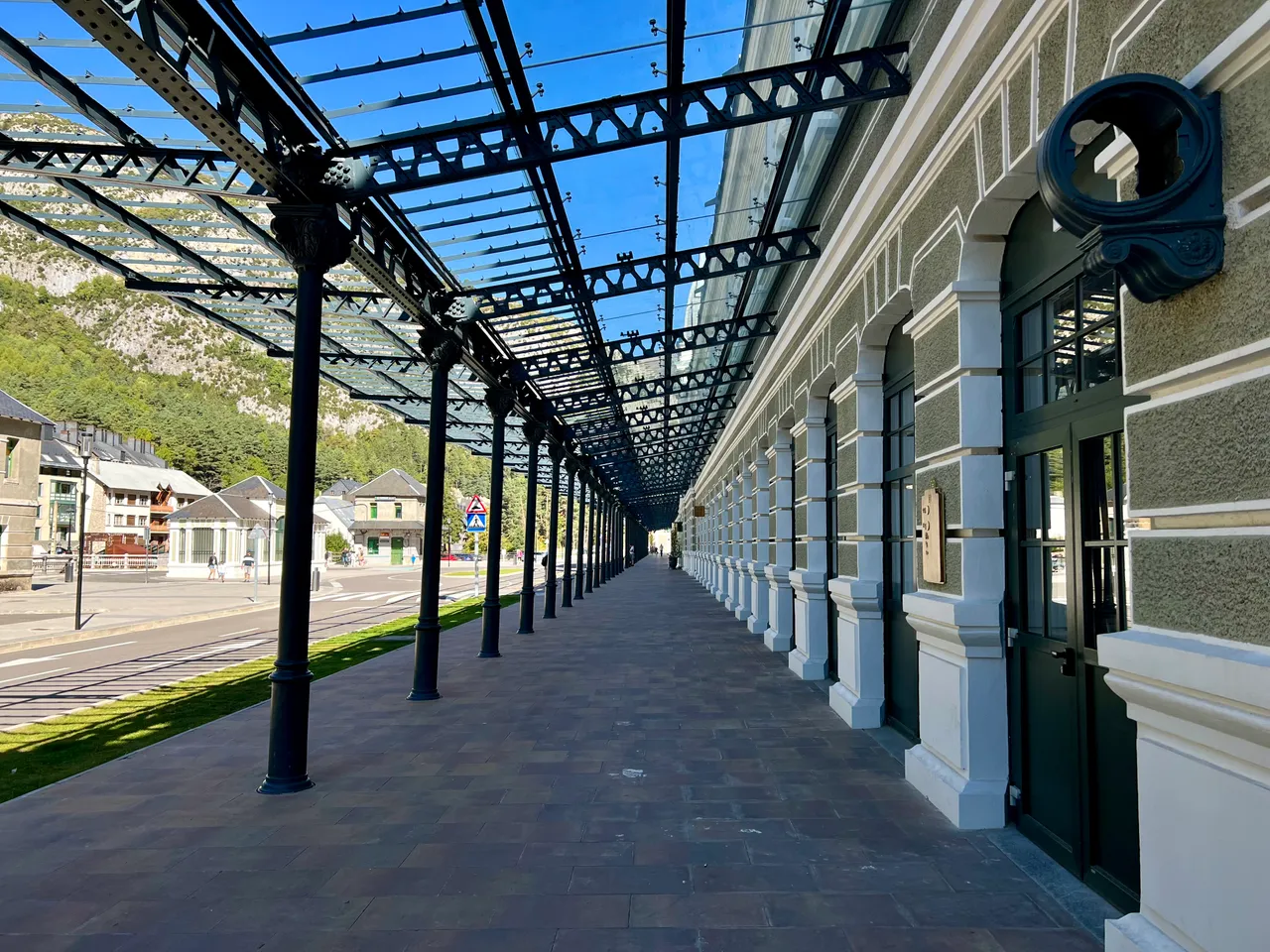
El edificio principal es una magnífica muestra de arquitectura típica de la época en la que se construyó. Representaba el primer contacto con España, por lo que se proyectó una obra que sorprendiera por su grandiosidad. Y vaya si lo consiguieron.
Estamos ante un edificio declarado Bien de Interés Cultural por el Gobierno de Aragón. Gracias a esa protección se ordenó su conservación y posterior restauración. Ahora, además, se ha reconvertido en un hotel de lujo que asegura su mantenimiento y mejora.


Los turistas podemos merodear sin problemas por el exterior, ya que los trenes paran un poco antes. Los fines de semana y tiempos de vacaciones la explanada se llena de gente buscando, como yo lo hice en este día, las mejores fotografías.
Se conservan algunos elementos que recuerdan los trabajos de carga y descarga, como pies de grúas, palancas de cambio de agujas o cojinetes.

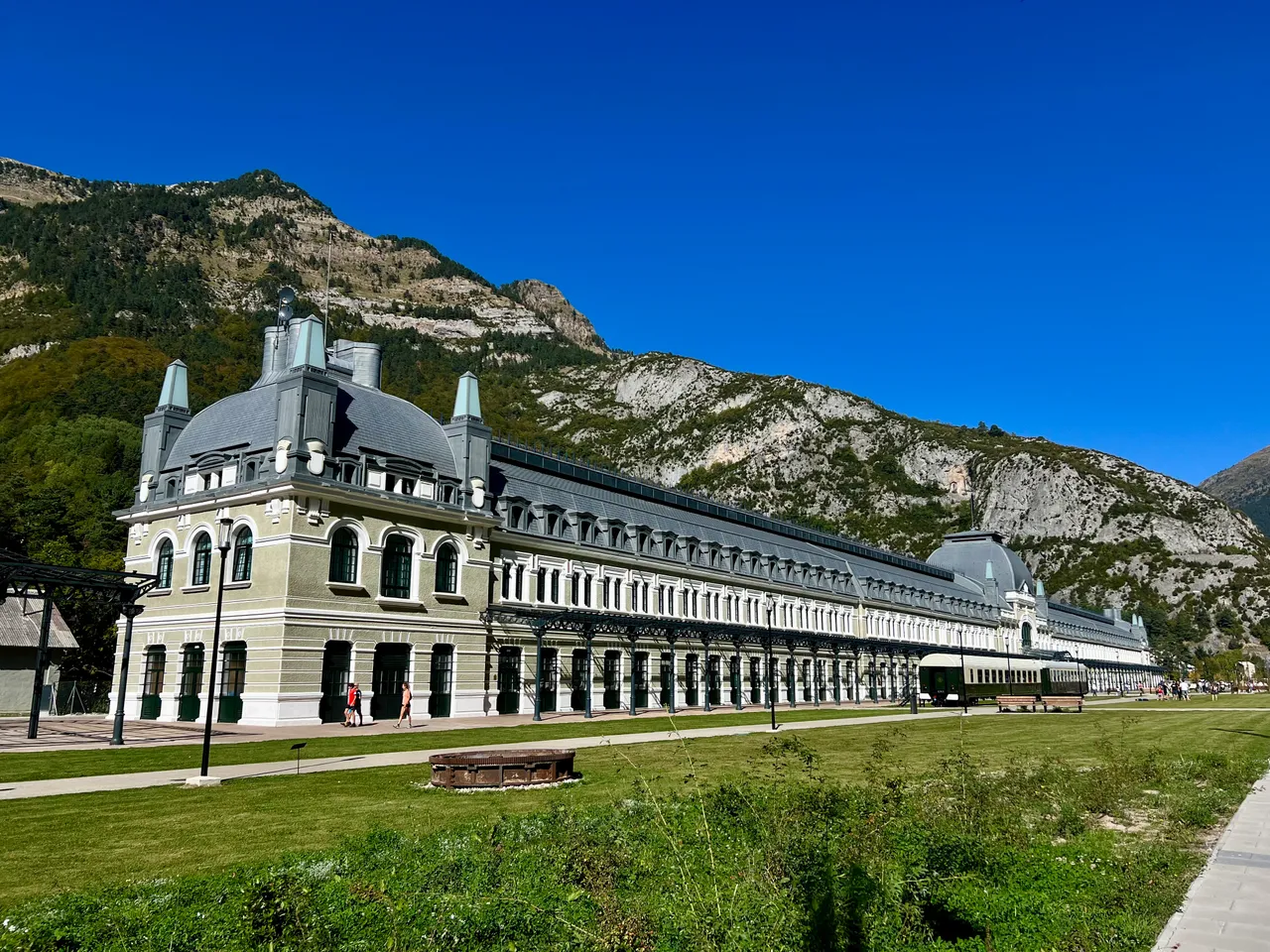
Lo que ahora vemos como una gran extensión de césped eran varias vías con sus correspondientes andenes. Junto al hotel vemos un vagón de tren, nos acercaremos a husmear...
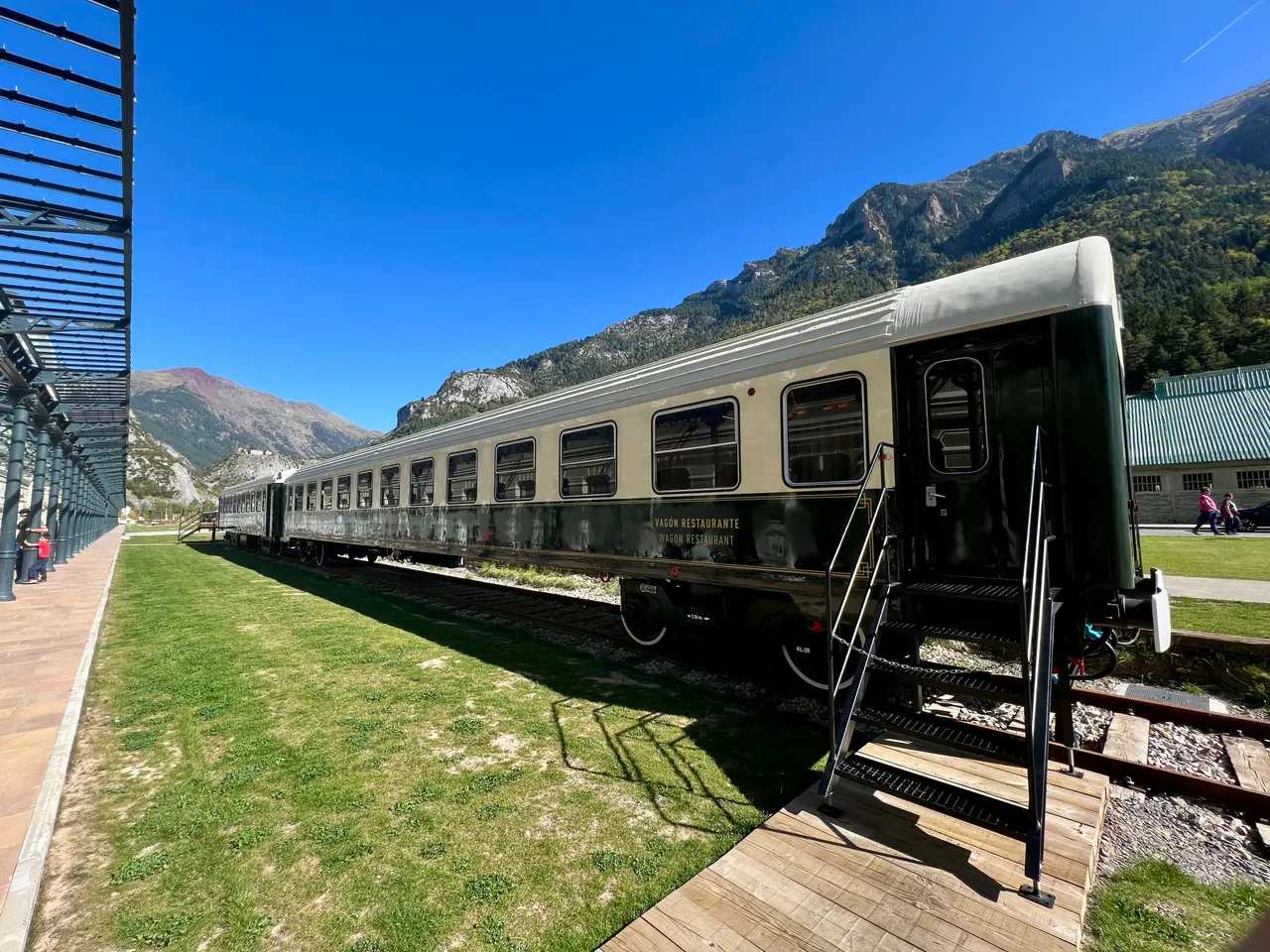
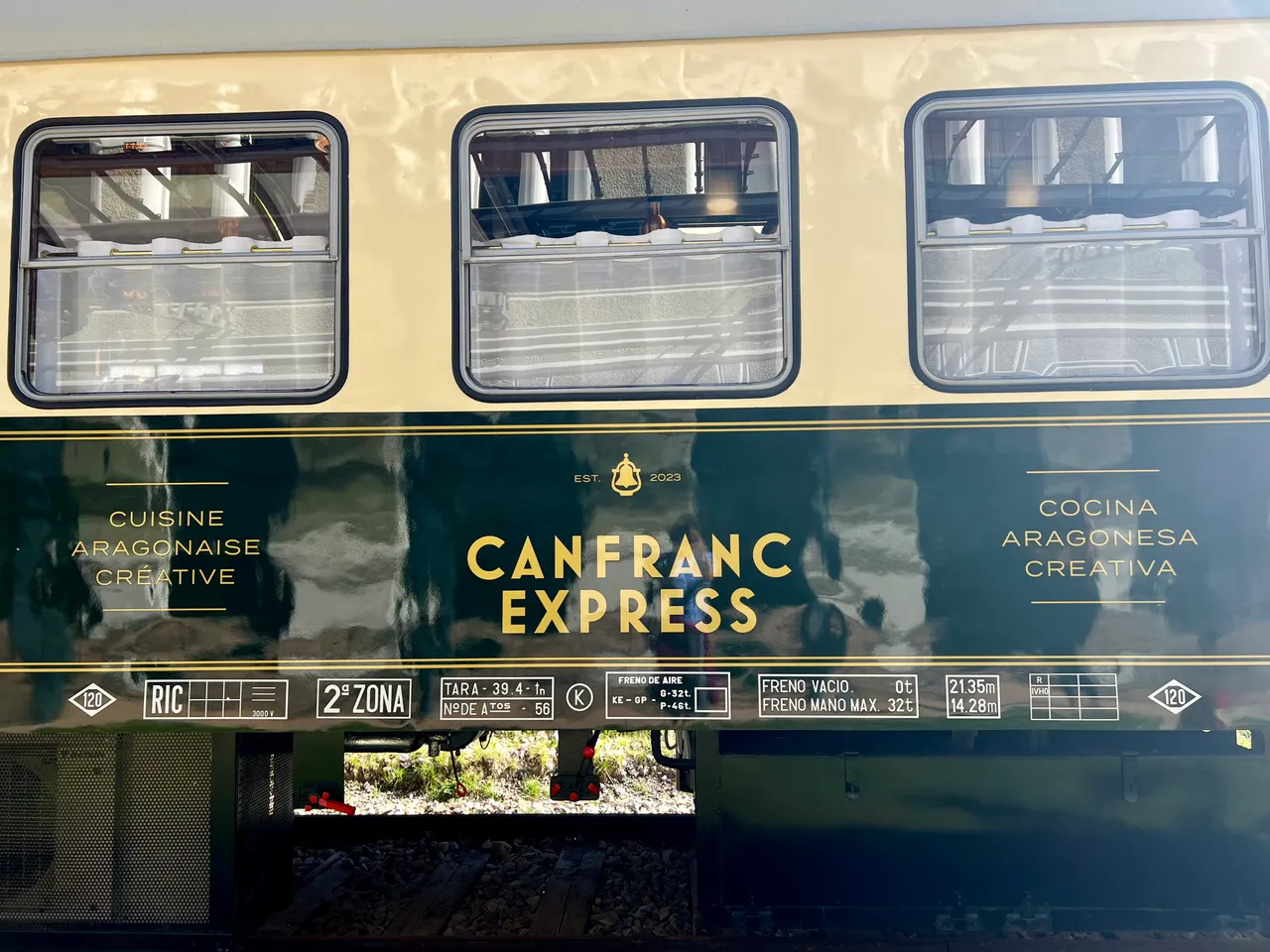
¡Oh, sorpresa! Es un restaurante. Y resulta que le acaban de conceder una Estrella Michelin, así que esa cocina es de la buena.
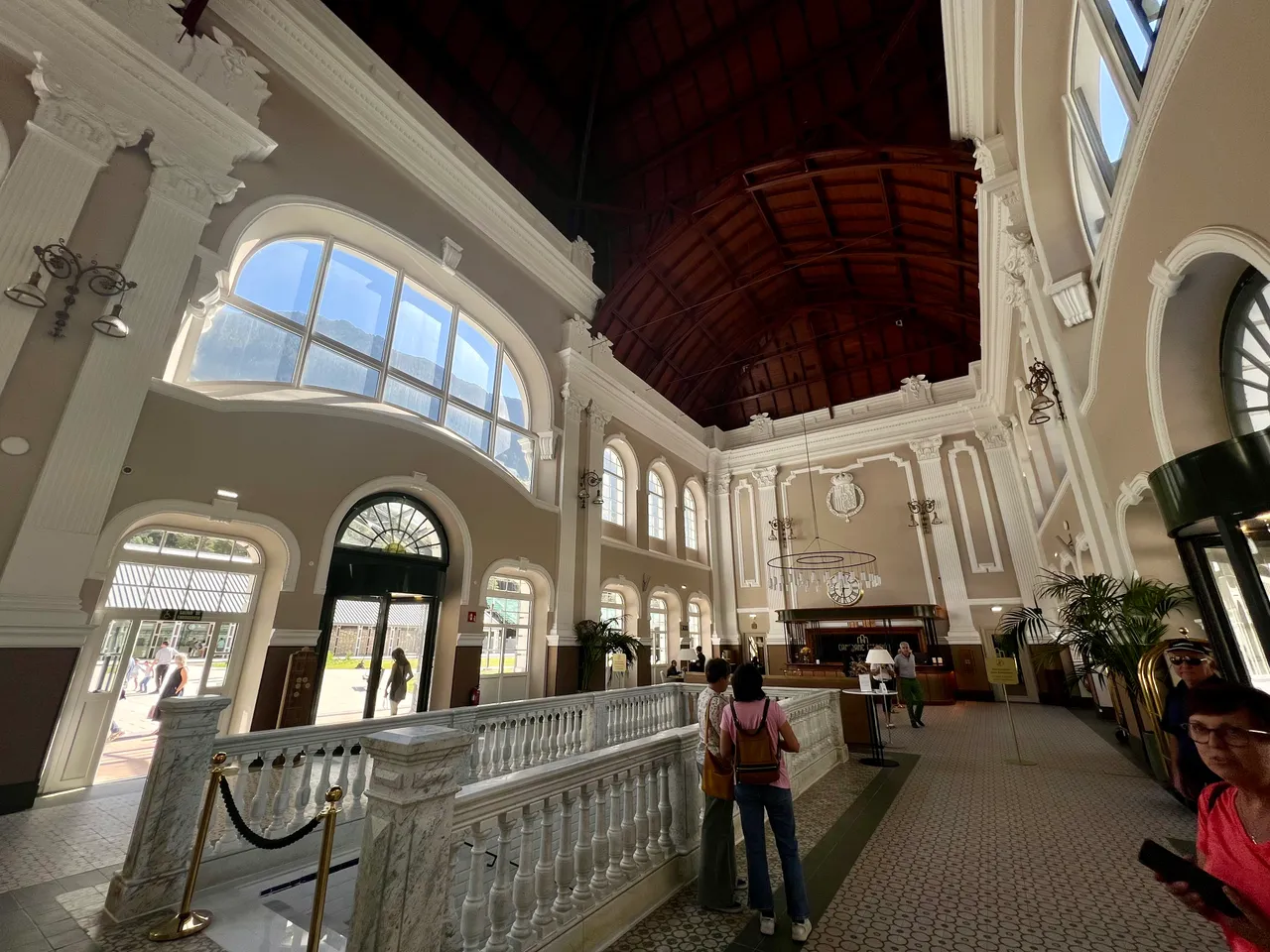

Continuamos el paseo adentrándonos en lo que fue el vestíbulo de la estación y que ahora es la recepción del hotel. Es como si volviéramos un siglo atrás en el tiempo. Los azulejos del suelo, el mármol de la balaustrada del paso subterráneo, las molduras de yeso... es increíble cómo se puede revivir un habitáculo tras una buena limpieza y varias capas de pintura.
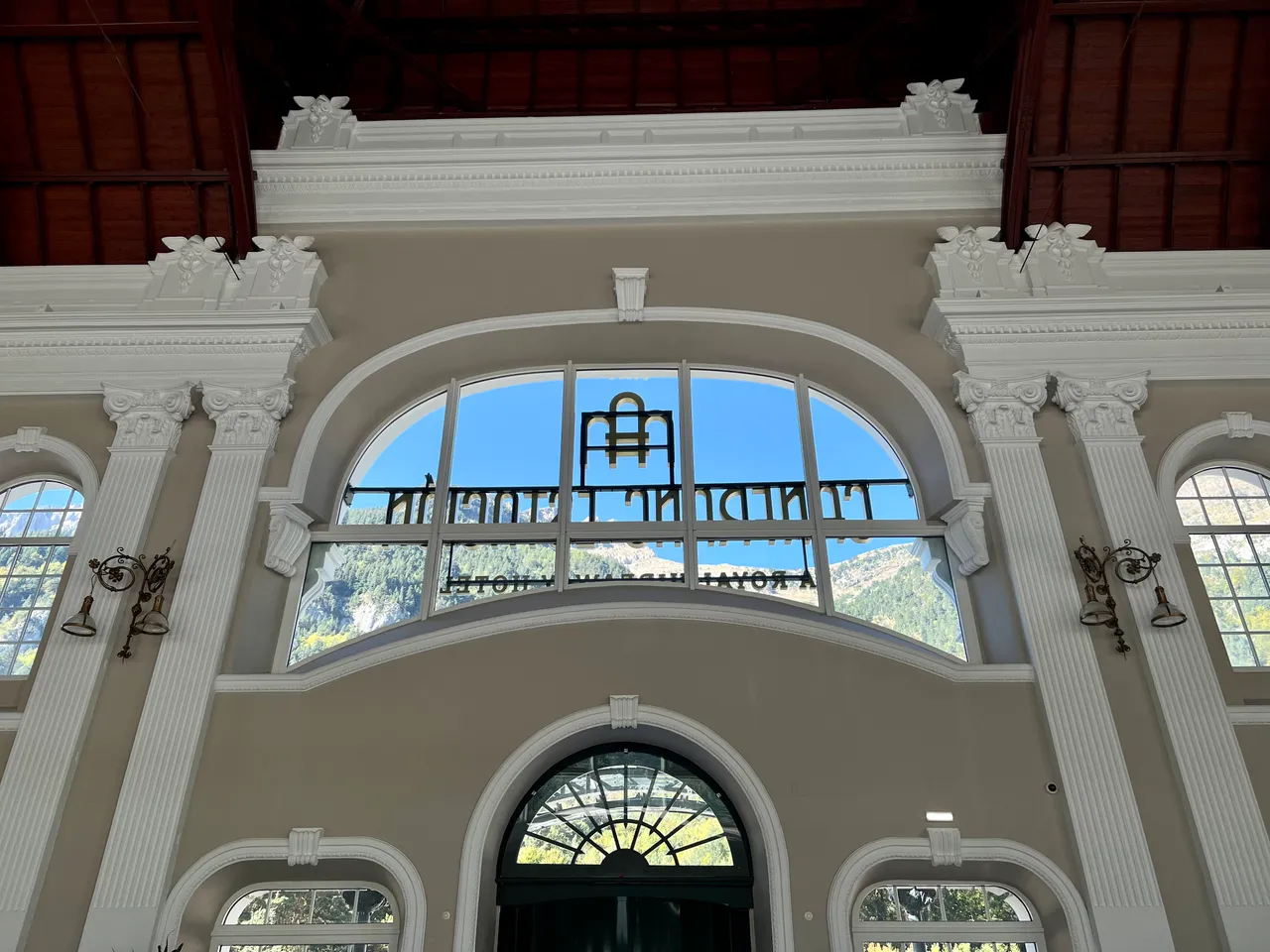
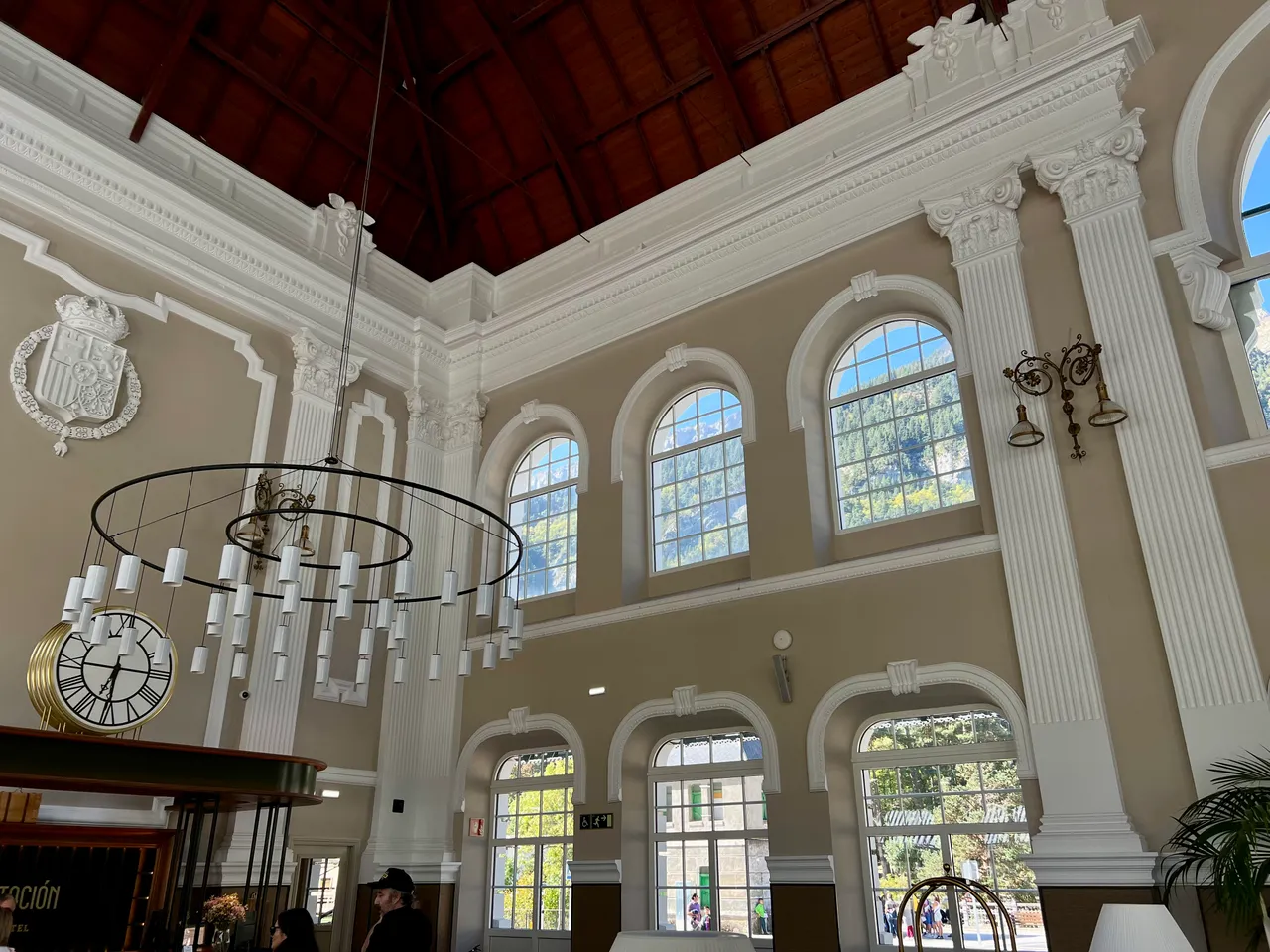
Los actuales propietarios han sabido combinar los elementos modernos con los antiguos, logrando un ambiente equilibrado y en sintonía con el lugar.
Mientras caminaba por el vestíbulo me imaginaba las miles de personas que han pisado esas baldosas y mirado por esos ventanales. Unos huyendo de guerras, otros adentrándose en ellas para espiar al enemigo. Porque aquí hubo de todo, hasta sospechas de que el oro nazi pasó por las vías de Canfranc.
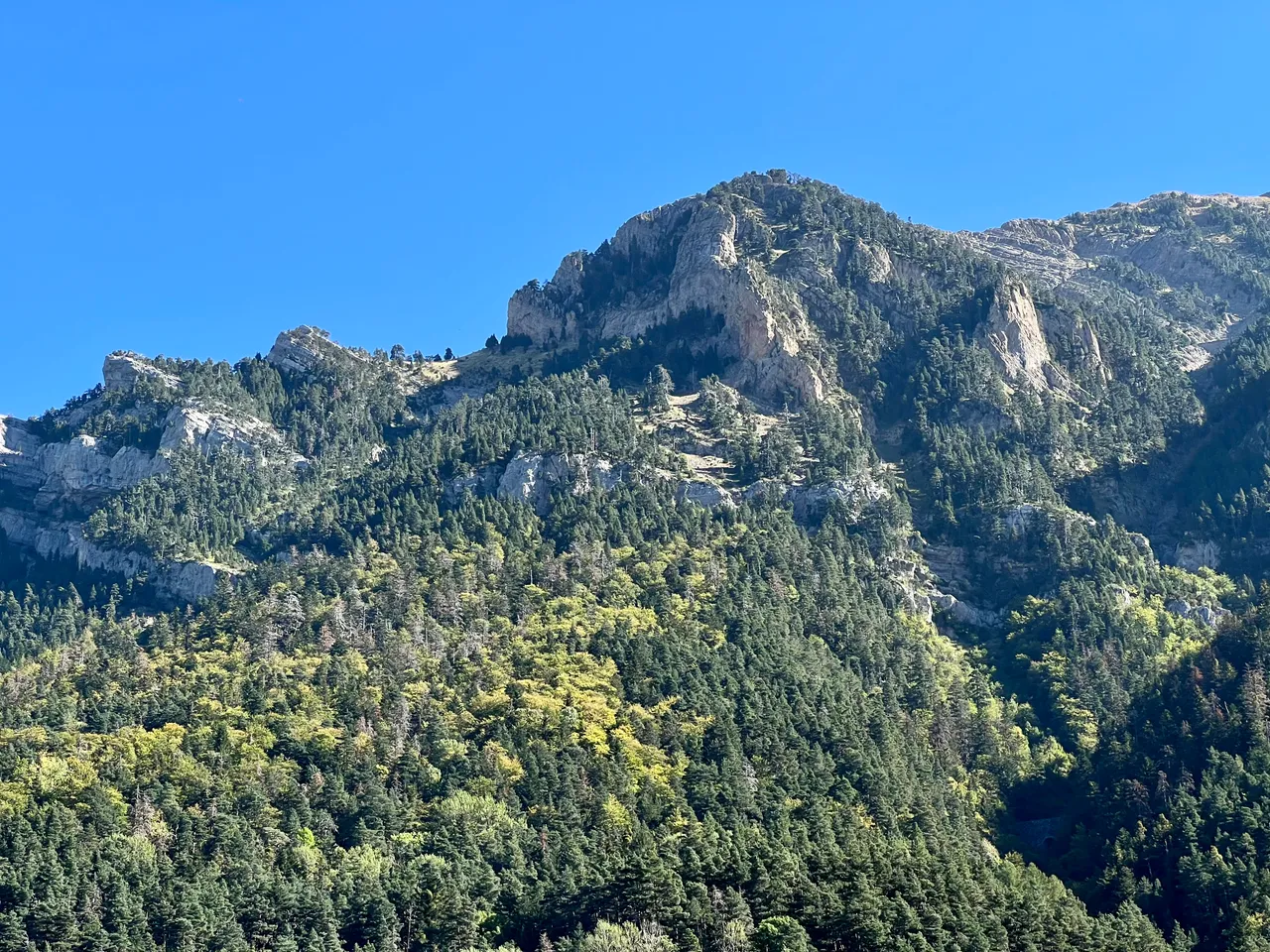
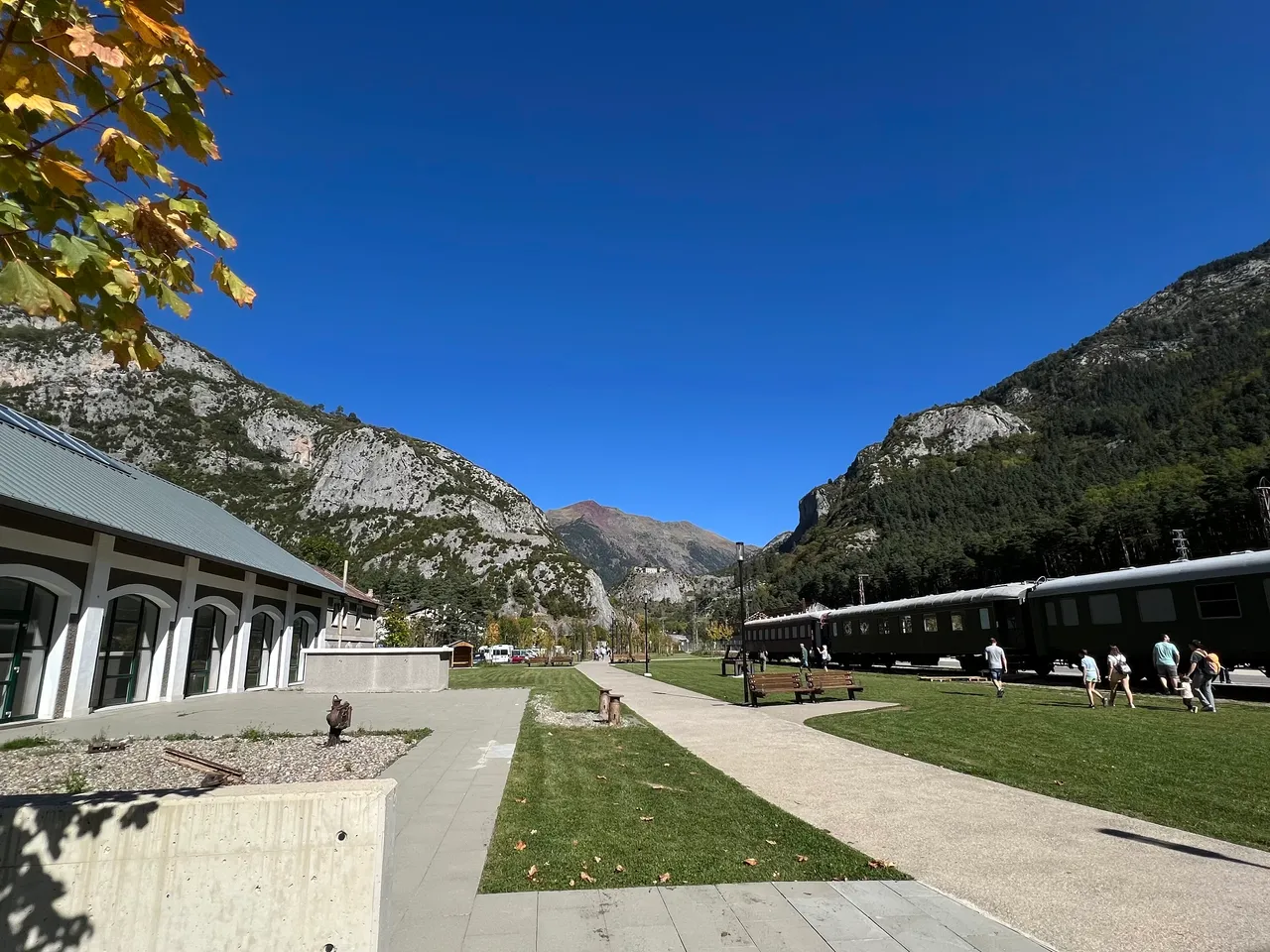
Salimos de nuevo al exterior, esta vez para contemplar las montañas que rodean la planicie. El otoño empezaba a despuntar y esperábamos encontrar más tonos amarillentos. No nos importó, pues el Pirineo está bonito vayas cuando vayas.
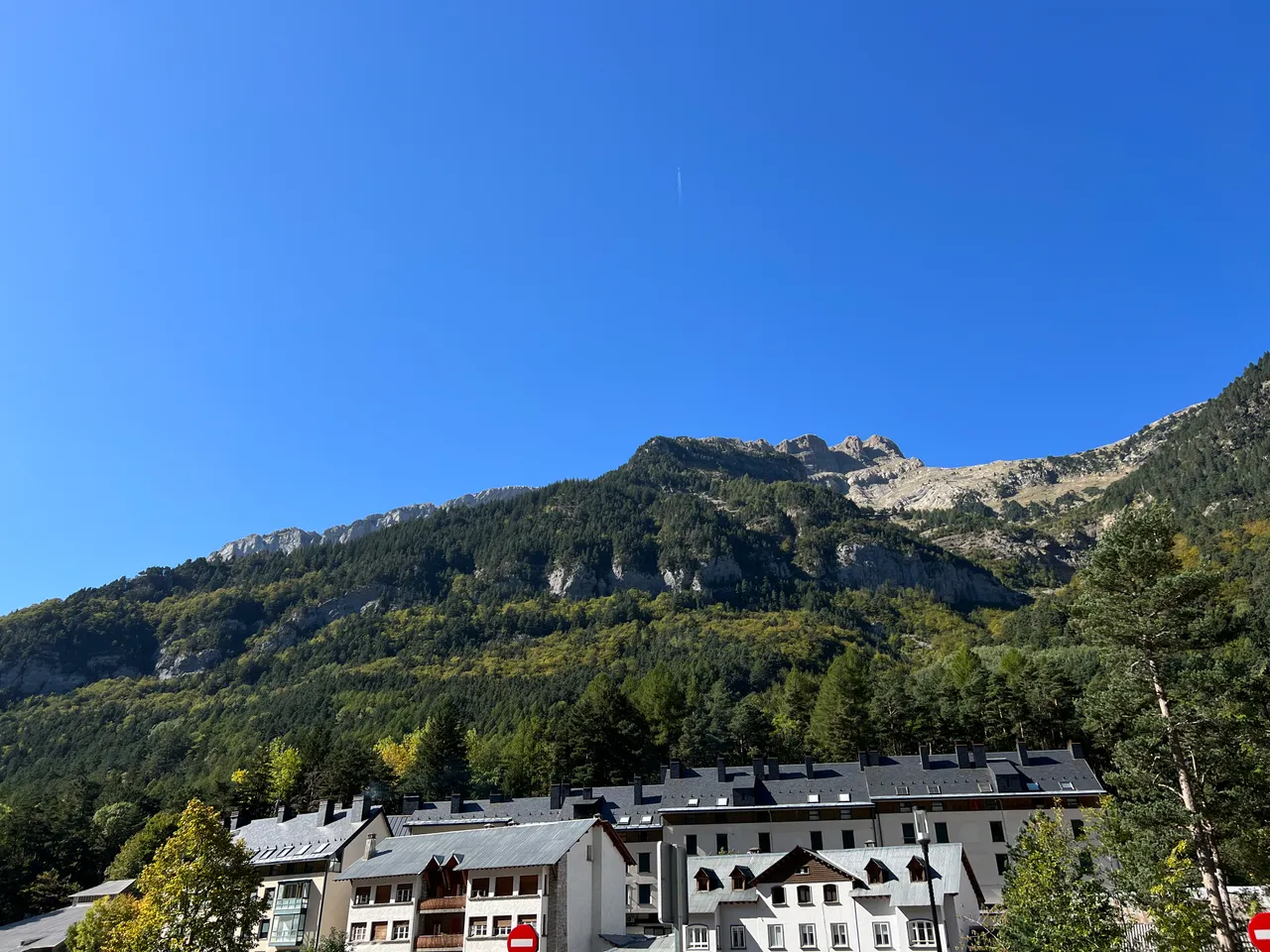

Es hora de irnos despidiendo del lugar, para lo cual cruzamos de nuevo el puente de acceso.

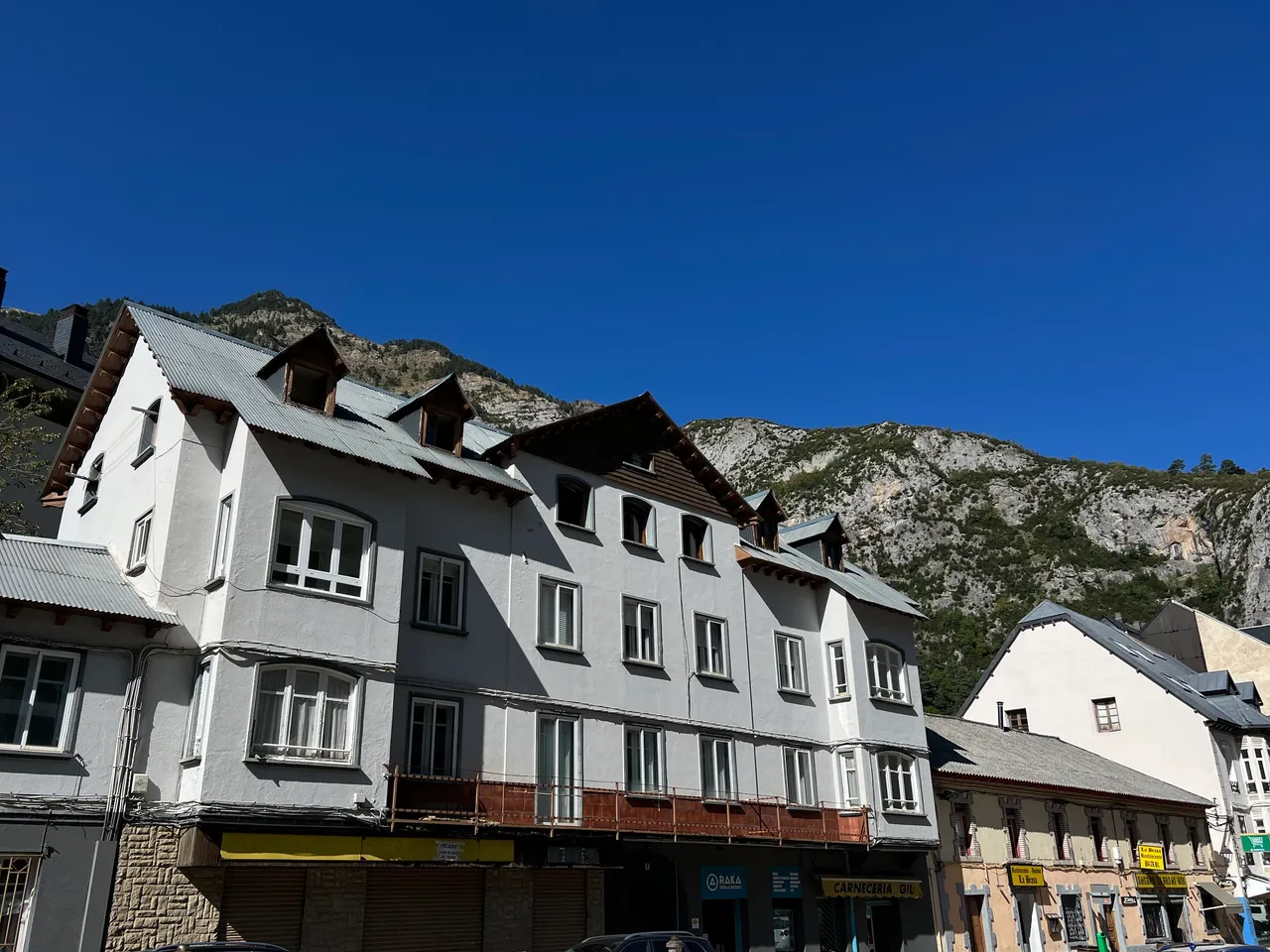
Oh, una sorpresa final: me gustó mucho encontrar este cartel con fotografías antiguas del lugar. A pesar del largo abandono su construcción más antigua se mantiene en pie, como puedes comprobar en la última imagen.
Hasta la próxima publicación. Mientras tanto, ¡cuídate!

Aviso: Todo lo publicado en este post es de mi autoría, excepto los elementos en los que doy crédito a su/s autor/es. Por tanto, en caso de plagio o difusión sin mi permiso, ejerceré mis derechos de autor si así lo estimo oportuno.
Realizo mis fotografías con mi móvil iPhone, las edito en el editor de fotos de Mac y con la versión gratuita de la aplicación PicsArt.
Si te gusta lo que publico, únete a mi Fanbase pinchando aquí




Hi, dear hiver.
There is a place less than two hours from my city where nature, history and architecture combine to offer a spectacle for the eyes and the imagination to enjoy.


I am talking about the Canfranc International Railway Station, located in the heart of the Pyrenees. This building was for a couple of decades the main junction between France and Spain, with people and goods passing through its tracks on both sides of the border.
Inaugurated in 1928 under the reign of Alfonso XIII in Spain and the presidency of M. Gaston Doumergue in France, it remained in service until the end of the 1940s, when, due to political disagreements resulting from the Second World War, it was closed and fell into disuse until very recently.


The main building is a magnificent example of architecture typical of the period in which it was built. It represented the first contact with Spain, so it was planned to be a work that would surprise by its grandeur. And they succeeded.
This building has been declared an Asset of Cultural Interest by the Government of Aragon. Thanks to this protection, its conservation and subsequent restoration was ordered. Now, moreover, it has been reconverted into a luxury hotel that ensures its maintenance and improvement.


Tourists can wander around outside without any problems, as the trains stop a little earlier. On weekends and holidays, the esplanade is full of people looking, as I did on this day, for the best photographs.
There are still some elements that remind us of the loading and unloading work, such as crane feet, switch levers or bearings.


What we now see as a large expanse of grass used to be several tracks with their corresponding platforms. Next to the hotel we see a train carriage, we will go and have a look....


Oh, surprise! It's a restaurant. And it turns out it's just been awarded a Michelin Star, so that's good cooking.


We continue our walk into what used to be the station's lobby and is now the hotel's reception. It is as if we had gone back in time a century. The floor tiles, the marble of the subway balustrade, the plaster mouldings... it's amazing how a room can be brought back to life after a good cleaning and several coats of paint.


The current owners have managed to combine the modern elements with the old, achieving a balanced atmosphere in tune with the place.
As I walked through the lobby, I imagined the thousands of people who have walked on those tiles and looked through those windows. Some fleeing from wars, others entering them to spy on the enemy. Because here there was everything, even suspicions that Nazi gold passed along the Canfranc tracks.


We went outside again, this time to look at the mountains surrounding the plain. Autumn was beginning to dawn and we expected to find more yellowish tones. We didn't mind, as the Pyrenees are beautiful whenever you go.


It is time to say goodbye to the place, so we cross the access bridge again.


Oh, a final surprise: I was very pleased to find this poster with old photographs of the place. Despite the long abandonment, its oldest building is still standing, as you can see in the last picture.
Until the next post. In the meantime, take care!

Notice: Everything published in this post is of my authorship, except for the elements in which I give credit to its author/s. Therefore, in case of plagiarism or dissemination without my permission, I will exercise my copyright if I deem it appropriate.
I take my photos on my iPhone, edit them with the Mac photo editor and the PicsArt application (free version).
Translated with (free version) www.DeepL.com/Translator
If you like my content, join my Fanbase clicking here


